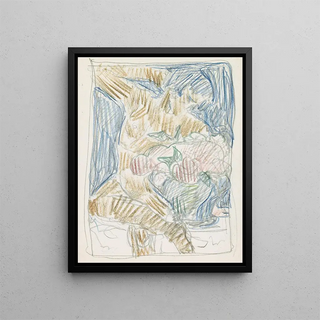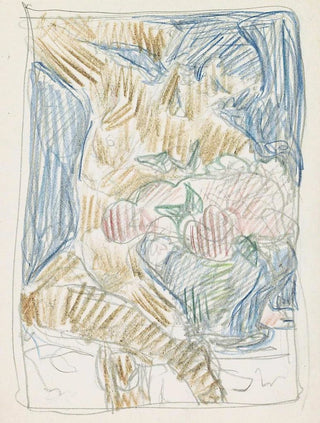Art print | Nude figure sitting next to a flower vase - Reijer Stolk


View from behind

Frame (optional)
In the rich and fascinating universe of art, some works manage to capture the essence of humanity through delicate and poignant representations. The art print of a nude figure sitting beside a vase of flowers - Reijer Stolk fits into this tradition, offering an introspective look at beauty and vulnerability. This piece, which juxtaposes the human figure with nature, invites us to deep contemplation, revealing universal emotions through carefully chosen forms and colors. The scene, both simple and loaded with meaning, awakens in us a sense of wonder and admiration for the complexity of life.
Style and uniqueness of the work
Reijer Stolk's style is characterized by timeless elegance, where every detail is designed to create visual harmony. In this piece, the nude figure, delicately modeled, presents itself with natural grace, contrasting with the vase of flowers that accompanies it. The chosen colors, both soft and vibrant, evoke an atmosphere of serenity, while highlighting the sensuality of the human form. The artist skillfully plays with light and shadow, creating subtle reflections that bring the composition to life. This dialogue between the figure and the vase, between human and nature, is at the heart of the work's singularity. Stolk manages to transcend simple representation to immerse us in a reflection on ephemeral beauty and the connection between man and his environment.
The artist and his influence
Reijer Stolk, a Dutch artist of the 17th century, marked his era with his innovative approach to painting. Influenced by the masters of the Renaissance and Baroque, he developed a personal style that combines realism and sensuality. Stolk was particularly recognized for his ability to capture light and emotion in his works, a trait that shines brightly in the art print of a nude figure sitting beside a vase of flowers. His artistic legacy has inspired many contemporary artists, who see in him a model of finesse and technique. Stolk's impact on art history is ind

Matte finish

View from behind

Frame (optional)
In the rich and fascinating universe of art, some works manage to capture the essence of humanity through delicate and poignant representations. The art print of a nude figure sitting beside a vase of flowers - Reijer Stolk fits into this tradition, offering an introspective look at beauty and vulnerability. This piece, which juxtaposes the human figure with nature, invites us to deep contemplation, revealing universal emotions through carefully chosen forms and colors. The scene, both simple and loaded with meaning, awakens in us a sense of wonder and admiration for the complexity of life.
Style and uniqueness of the work
Reijer Stolk's style is characterized by timeless elegance, where every detail is designed to create visual harmony. In this piece, the nude figure, delicately modeled, presents itself with natural grace, contrasting with the vase of flowers that accompanies it. The chosen colors, both soft and vibrant, evoke an atmosphere of serenity, while highlighting the sensuality of the human form. The artist skillfully plays with light and shadow, creating subtle reflections that bring the composition to life. This dialogue between the figure and the vase, between human and nature, is at the heart of the work's singularity. Stolk manages to transcend simple representation to immerse us in a reflection on ephemeral beauty and the connection between man and his environment.
The artist and his influence
Reijer Stolk, a Dutch artist of the 17th century, marked his era with his innovative approach to painting. Influenced by the masters of the Renaissance and Baroque, he developed a personal style that combines realism and sensuality. Stolk was particularly recognized for his ability to capture light and emotion in his works, a trait that shines brightly in the art print of a nude figure sitting beside a vase of flowers. His artistic legacy has inspired many contemporary artists, who see in him a model of finesse and technique. Stolk's impact on art history is ind






